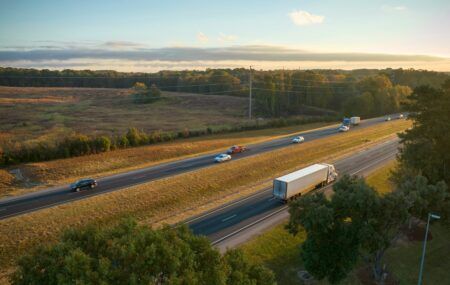Air quality monitoring technology from EarthSense, a joint venture between aerial mapping company Bluesky and the University of Leicester in the UK, has provided real-time data for trials into the use of low emission vehicles (LEV) to improve air quality in polluted city centers.
As part of Project ACCRA (Autonomous and Connected vehicles for CleanerR Air), the data collected by both mobile and static EarthSense Zephyr air-quality monitoring sensors was used to automatically activate zero emission running of hybrid electric vehicles as they passed through some of the most heavily polluted city streets. ACCRA was a 12-month project, led by Cenex, the UK’s first Center of Excellence for low-carbon technology, in partnership with Leeds City Council and the Transport Systems Catapult (TSC). Using parts of the Leeds Clean Air Zone (CAZ), ACCRA used real time air pollution measurements, captured by EarthSense, to trigger zero-emission running mode in a 7.5 metric ton Range Extended Electric Vehicle (REEV) when entering a designated control zone.
The recently completed Project ACCRA has developed the products and communication protocols that enable the transfer of data between plug-in vehicles and air-quality sensors. The data is then used by a ‘Decision Making Engine’ to monitor, manage and control the location and duration of zero emission operation of plug-in hybrid and range-extended hybrid vehicles within a city center or other designated zone. Other project partners include clean truck technology company Tevva, and transportation network system developer Dynniq. During the trials in Leeds, Zephyr sensors were mounted in key locations in the city center, as well as on vehicles traveling through the area. Data from the sensors was used to update an air quality model, in real time, which was then used to regulate the vehicle’s emissions in the most polluted/traffic-dominated areas.
EarthSense has already undertaken a range of air-quality monitoring projects, including trials of an airborne air-quality mapper, air pollution monitoring equipment on a rocket, and mobile mapping with air quality sensors mounted in electric cars, as well as deploying Zephyr air quality sensors across the UK and overseas. Plans include the establishment of a nationwide network of air-quality Zephyr sensors, feeding live data for real-time air quality predictions.
“This is a first – using real-time data from both static and mobile sensors to create a dynamic air-quality model. This model is then used to define the control zone or ‘geofence’, which automatically triggers zero emission running on the truck. This zone can be adjusted, in location, size and time duration, in line with the real-time air quality status and in accordance with specific project objectives,” explained Tom Hall, EarthSense’s managing director. “Project ACCRA has therefore successfully created a combination of technology and proven its potential to transform Leeds City Center and save lives without additional charges to motorists or businesses.”




